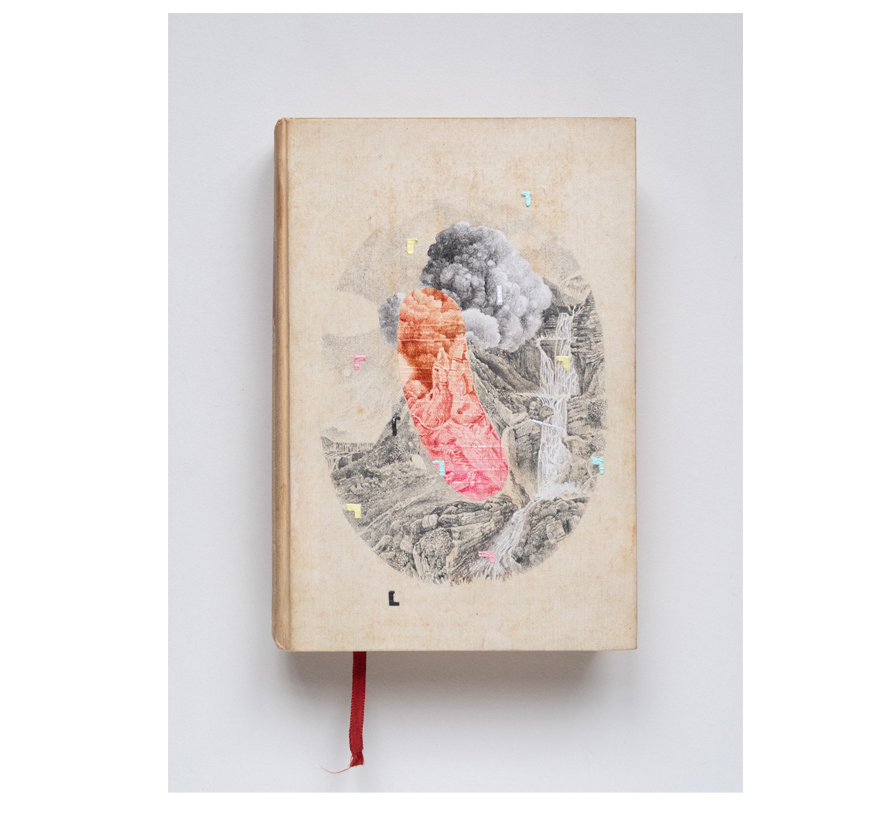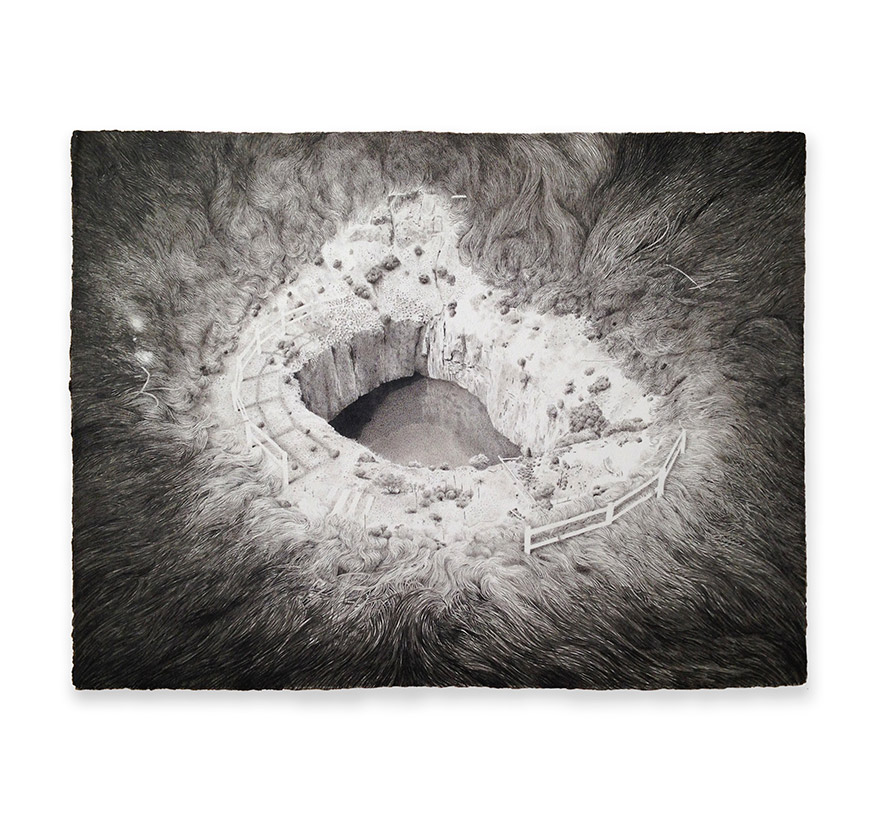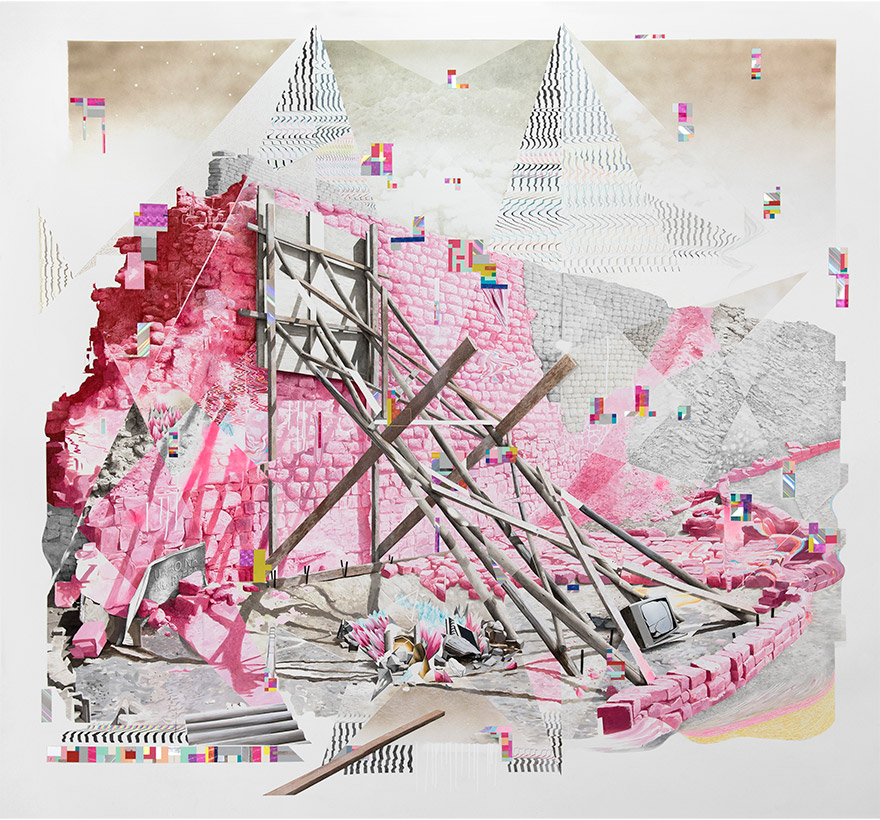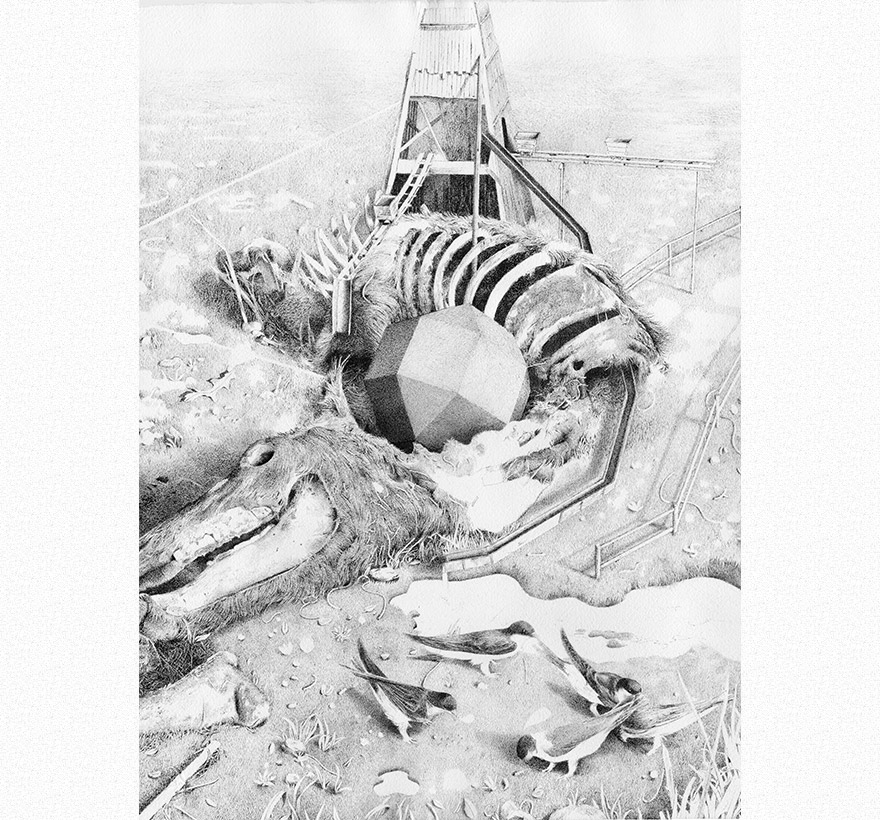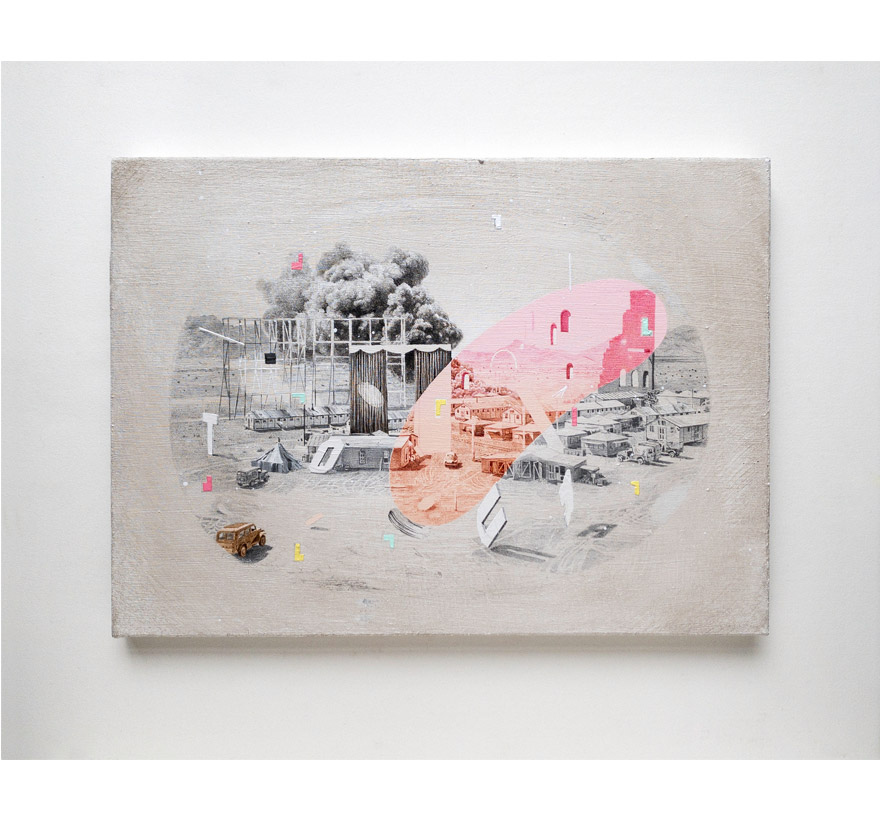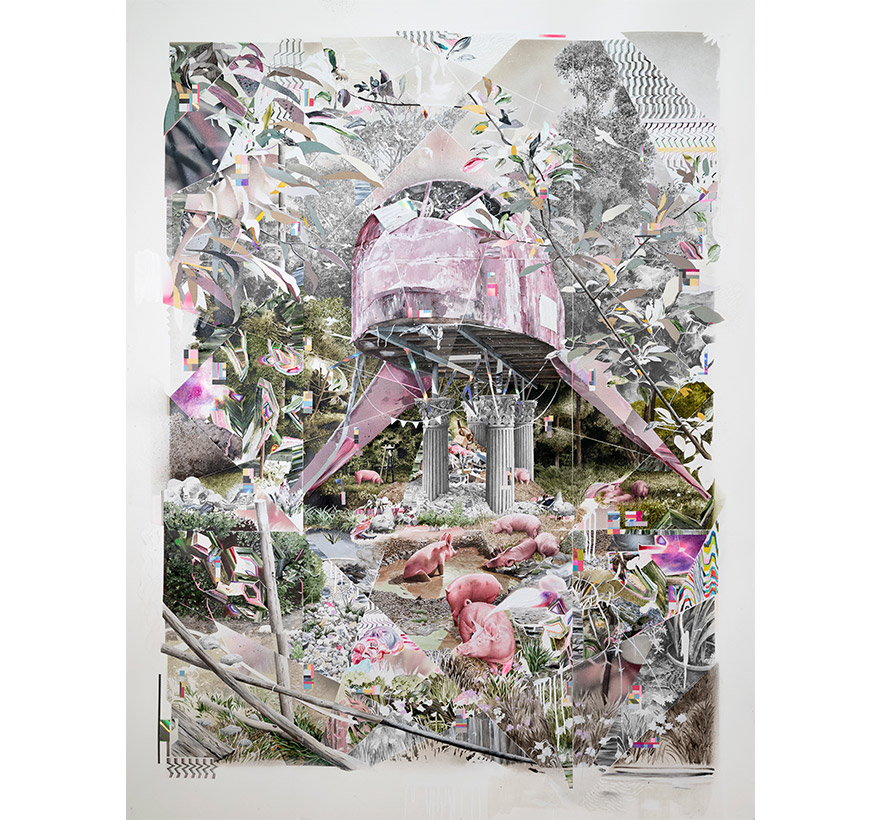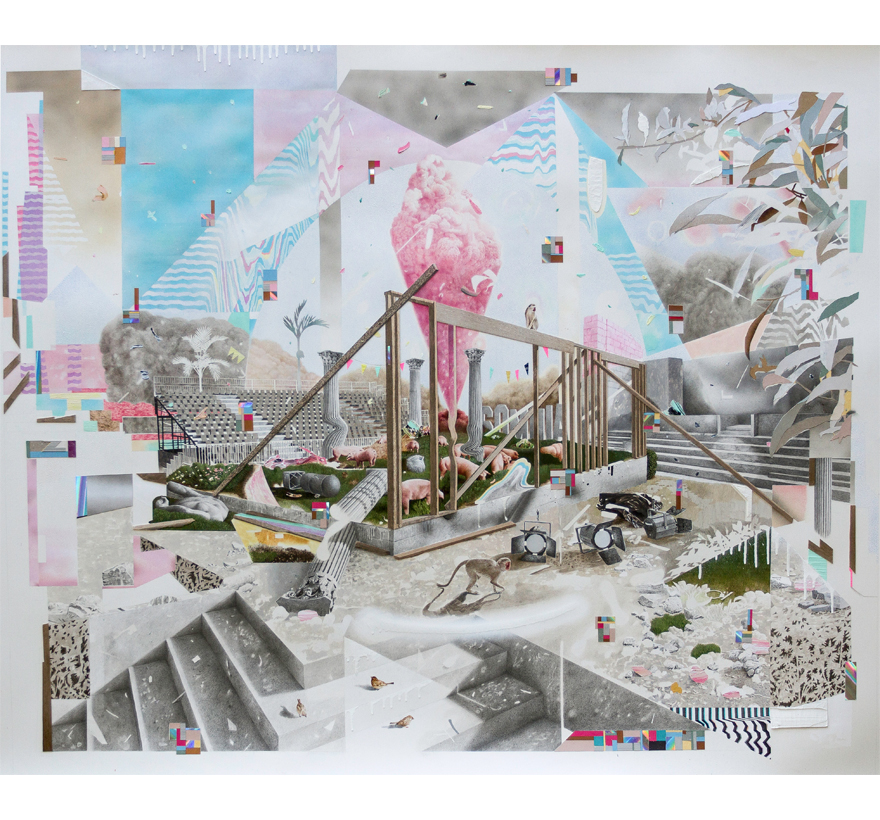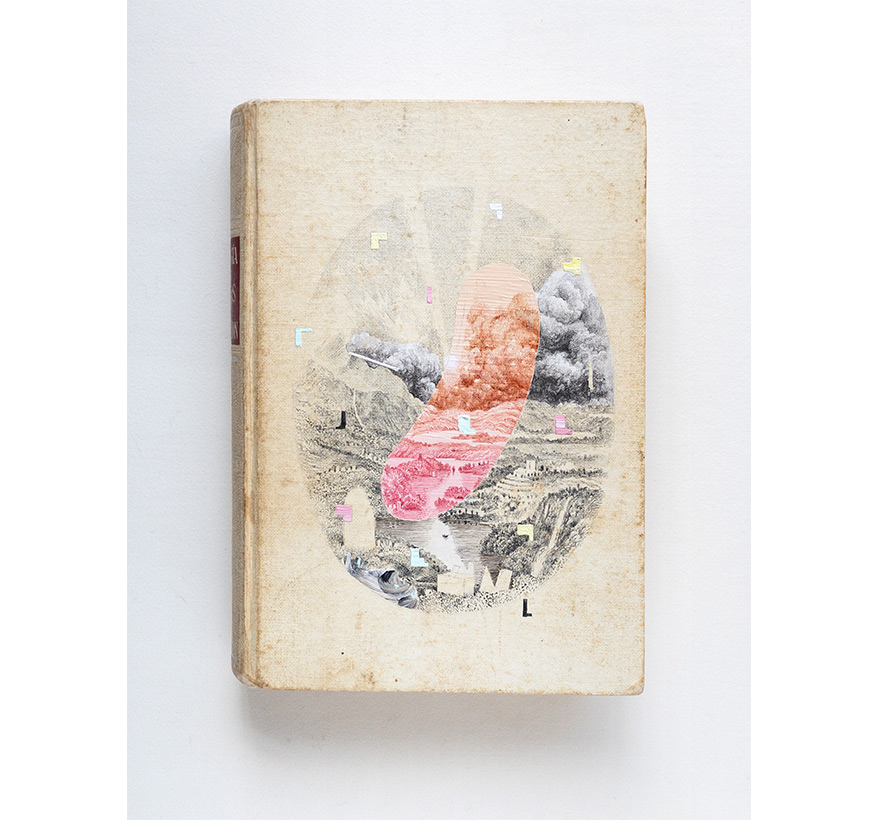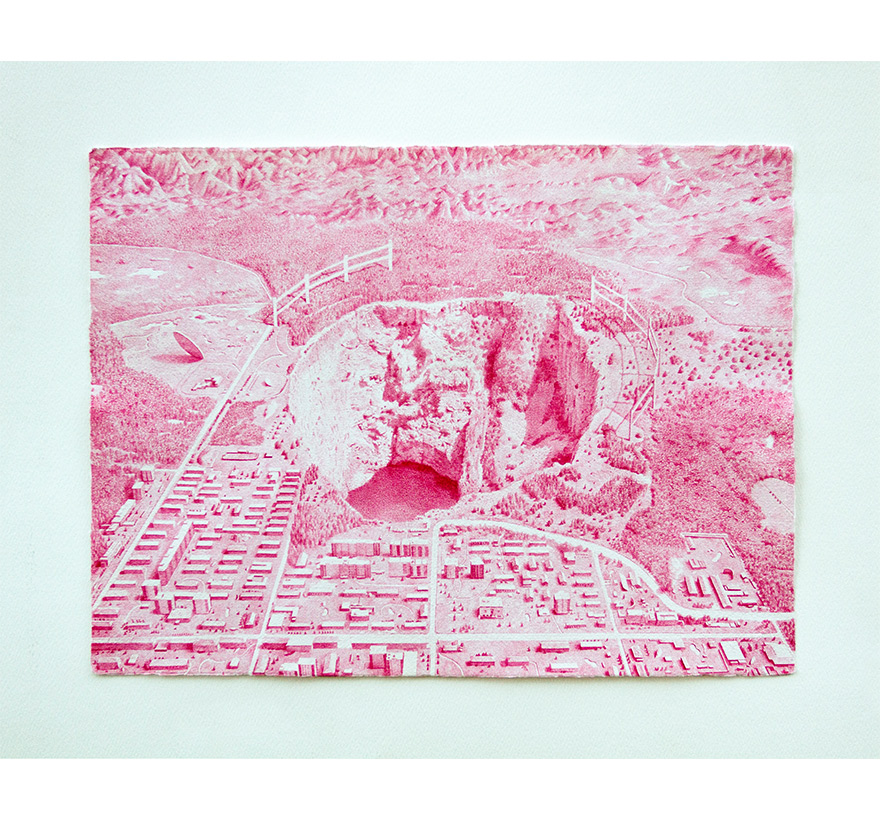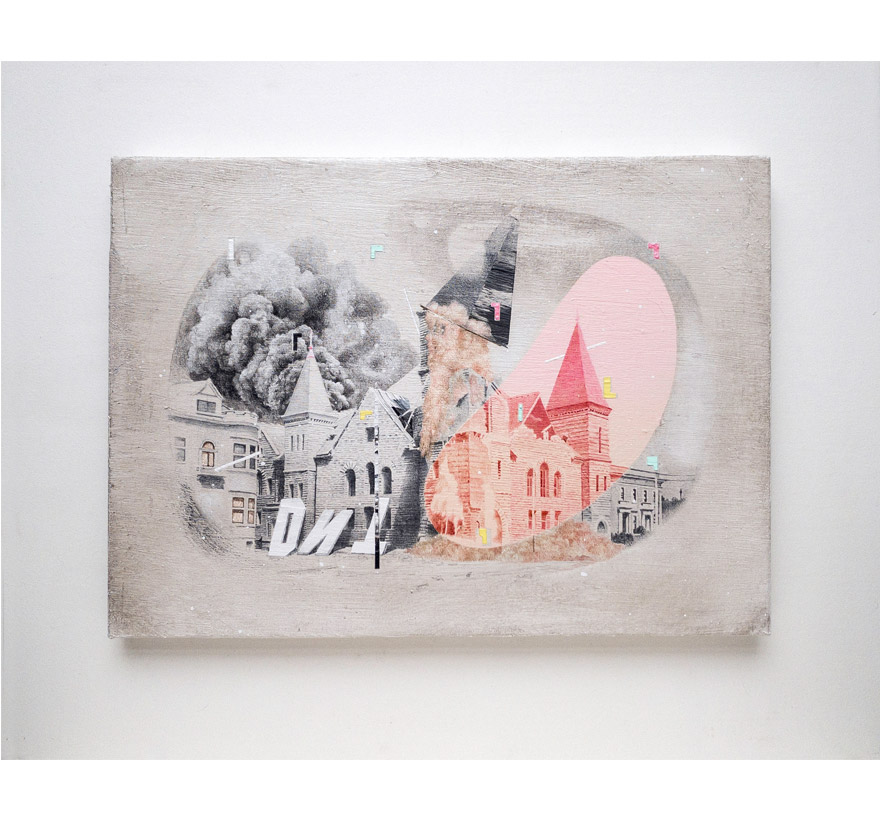Santiago Talavera
Albacete, 1979
The central axis of Santiago Talavera’s work is the reflection on the human condition through the investigation of landscape and its symbolic, narrative, and spatial possibilities. The absence of the human being in his works, in combination with an intimate and absurd atmosphere in which past and future seem to intermingle, accentuates the need to think about the place we occupy, rather than as mere observers.
More about the artist
Through drawing, painting or video, Santiago Talavera prefigures and reconstructs space by investigating the imaginative possibilities of nature. His scenes seem to form a fragmented story where the newly occurring and the imminent open paths to speculation, and in which conflicts arising from the relationship between culture and nature are filtered.
In this direction, his work leaves traces of a landscape permeable to openly political issues of a collective nature that transcend personal domains. Hauntopolis, his current project that will be released in 2020, recovers the utopian tradition in a personal interpretation of how to address the disappointment of a cultural present that folds over itself.
Bachelor of Fine Arts at UCM in Madrid, with a last year at the Camberwell College of Arts in London, his work has been exhibited individually and collectively in various institutions, including Museo de Arte Contemporáneo Gas Natural Fenosa de A Coruña, La Casa Encendida and Real Academia de Bellas Artes de San Fernando in Madrid, Chicago’s Instituto Cervantes, Berlin Freires Museum, Art Fair Sudáfrica, Arte Santander or Just Madrid.
Among his individual exhibitions are notable Conmigo llevo todas las cosas (La New Gallery, 2013) and Que el destino de las cosas se decida en lugares pequeños ( Blanca Soto Arte Gallery, 2009). His multiple group exhibitions include Animalista, (La Casa Encendida, 2016), 12 Mostra Internacional de arte Gas Natural Fenosa, (Museo de arte contemporáneo de A Coruña, 2012), Otras tauromaquias (Calcografía Nacional de la Real Academia de San Fernando, 2016), or Nulla dies sine linea (Instituto Cervantes Chicago / Freies Museum Berlín & Sangsang Madang Gallery Seúl).
His work is present in both private and institutional collections, including MAC (Museo de arte contemporáneo de A Coruña), Obra Social Caja Madrid or Universidad Nacional a distancia.

Artworks
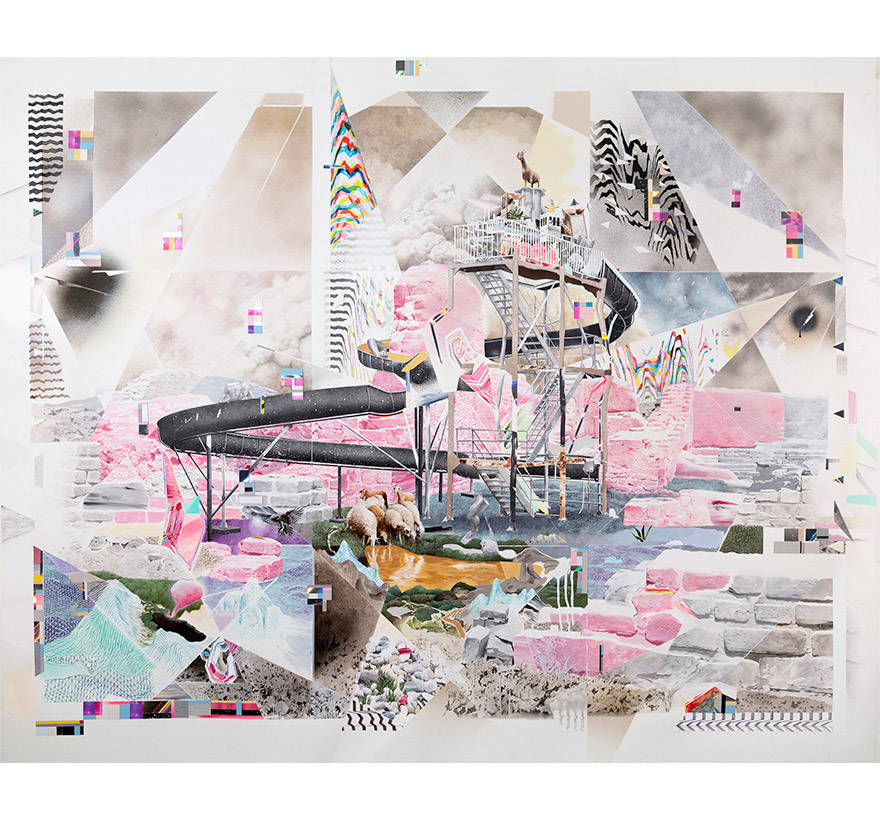
Las cosas cambiaron tan rápido que resultó difícil acompañarlas (2019)
